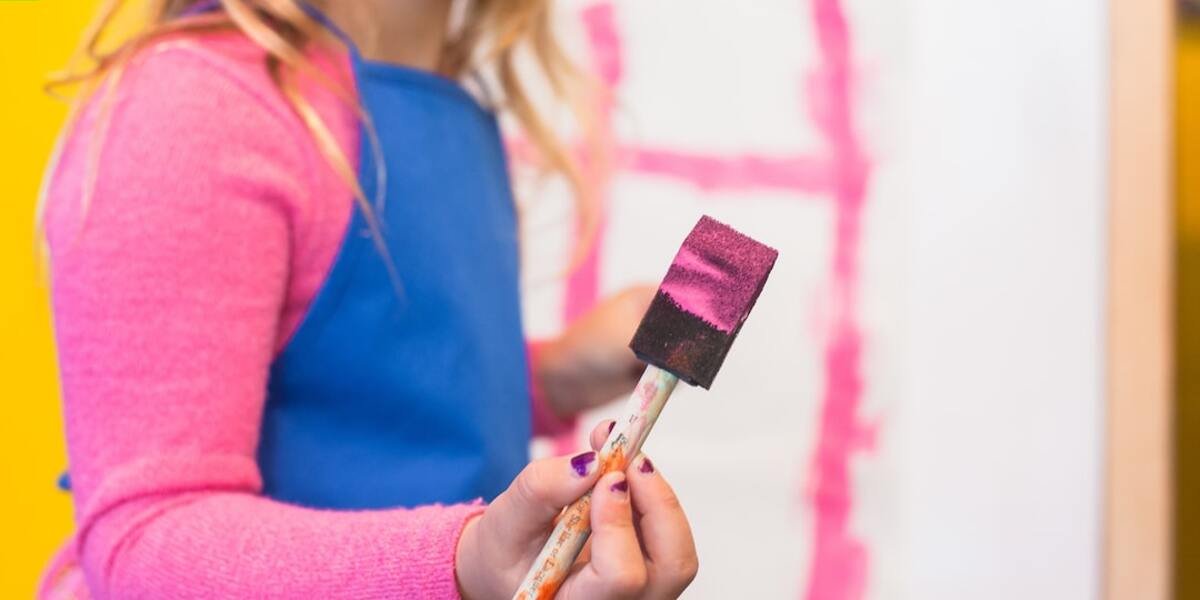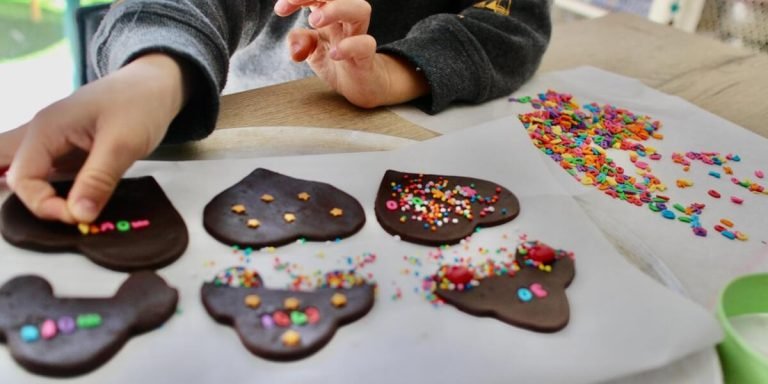Hands On Activities for Kids: Engaging Ways to Inspire Learning and Creativity at Home
Children absorb and process information best when they’re actively involved in their learning journey. This is where hands-on activities for kids come into play, serving as an effective tool to inspire curiosity, creativity and independent thinking. Such engagement offers a world of discovery on multiple levels – cognitive, physical, social-emotional -, fostering not only academic prowess but also adaptive skills.
In the realm of activity-based learning at home, we can provide multifaceted experiences that stimulate children’s imagination while reinforcing concepts learned in school or even introducing new ones . And the beauty lies in its simplicity – most times all it takes are common household items transformed with just a dash of creativity! Dive right into this blog post as we explore engaging ways you too can implement playful lessons which subtly slide educational content under your child’s radar.
Did you know?
Did you know that hands-on activities can enhance your child’s memory retention? According to a study by the National Institutes of Health, children remember information better when they learn through active physical engagement compared to passive learning methods.
The Role of Activity-Based Learning in Child Development
The advancement of technology over the years has paved a pathway for integrating it with education, ensuring an interactive and engaging learning environment. When considering early childhood development in 2023 and beyond, Activity-Based Learning (ABL) becomes central to this integrative approach. ABL embraces hands-on activities for kids that encourage them to be active participants rather than passive recipients of information.
Activity-based learning utilizes tasks or assignments as primary teaching tools instead of relying solely on traditional lecture methods. In these dynamic environments, technology proves instrumental by introducing innovative platforms where children can learn while they play—thus making education more appealing and effective.
By intertwining enjoyable hands-on activities with core educational concepts, we are fostering a love for lifelong learning in our youngsters. Interactive games that incorporate shapes, numbers or science principles allow children not just to comprehend these lessons but also apply them practically – reinforcing their understanding better than theoretical teachings might achieve alone.
In essence, activity-based learning serves as an indispensable tool within the context of both classroom instruction and home-schooling scenarios today—promoting cognitive engagement through direct interaction with subject matter via modern-day technological resources.
Implementing Hands-On Activities to Enhance Cognitive Growth
In today’s digital age, implementing hands-on activities for kids has become an integral part of childhood education. These playful and active methods, often encompassed under the broad umbrella term ‘Activity-Based Learning’ (ABL), are crucial to enhance cognitive growth in children.
Initially defined as a student-centered approach, ABL focuses on using engaging tasks directly linked with the learning material. However, its potential reaches far beyond textbooks or traditional classroom settings. Today’s advanced technology allows educators to incorporate various tech tools into these exercises which can make them more compelling and effective.
Using technological devices like tablets for drawing projects not only boosts their creativity but also improves hand-eye coordination – a skill essential especially during early developmental stages.
Similarly virtual reality headsets transport young learners into different environments – be it historical periods they’re studying about in social studies lessons or cellular structures being discussed at biology sessions; thus aiding in better understanding plus retention of concepts learned..
Fostering Emotional and Social Skills Through Interactive Play
Instilling emotional and social skills in children has been recognized as pivotal for their overall development. A great medium to achieve this is through interactive play, particularly hands-on activities for kids.
Traditionally, teaching often revolved around passive learning with a straightforward transfer of knowledge from educator to child. Today’s research suggests that integrative methods such as activity-based learning contribute significantly towards boosting the cognitive growth of children while helping them foster social interactions and emotional understanding.
- Encouraging cooperation with peers
- Developing empathy through understanding different perspectives
- Enhancing communication skills through group interaction
- Building confidence via successful task completion
- Teaching conflict resolution when disagreements arise during activities
1) Promoting empathy: When participating in group tasks or role-plays, children get a chance to step into someone else’s shoes which nurtures empathetic behavior.
2) Cultivating teamwork: Team-oriented games mandate cooperation among participants. They learn about working together harmoniously by sharing ideas and resources which enhances their team spirit.
3) Encouraging communication: Such engagements provide youngsters an opportunity to express themselves clearly thus improving their verbal/non-verbal communication skills.
4) Fostering problem-solving ability: Be it building blocks or solving puzzles; all these require creative thinking which indirectly shapes up problem-solving capabilities within young minds.
Designing Engaging Spaces for Children’s Hands-On Activities
Designing engaging spaces for children’s hands-on activities is essential in integrating technology into education. In the year 2023, where technological advancements are paving new ways of learning, it’s vital to incorporate ‘hands-on’ experiences that allow kids to actively engage with their environment. From interactive whiteboards and tablets at schools to educational apps and virtual reality sessions at home, technology-infused learning environments can help foster creativity, improved memory retention and a better understanding of complex concepts.
Hands-on activities do not solely refer to interacting with physical objects but extend far beyond this traditional viewpoint in today’s digital era. Interactive e-books or augmented reality experiments can be classified as such since they encourage active participation from kids. They motivate young learners by introducing fresh challenges that stimulate critical thinking skills while allowing them room for exploration which leads towards innovative solution crafting -a skill set extremely useful across various aspects in life.
It’s also crucial when designing these spaces for children’s hands-on activities that we ensure they’re developmentally appropriate – tailored according to their age group abilities & interests ensuring maximum engagement levels possible.”Technology Integration into Education” should never position itself as whole replacement over conventional methods rather work hand-in-hand complementing each other.
Essential Elements of a Stimulating Learning Environment
Creating a stimulating learning environment is integral to incorporating hands-on activities for kids into their educational journey. Crucial in the practical application of concepts learned, these spaces foster an engaging and immersive experience that allows children to learn through doing.
When designing interactive zones for young learners to effectively engage with materials, consider several elements.
1. Safety: This is paramount when creating any space for children. Ensure all materials used are non-toxic and child-friendly, corners on furniture have been rounded off and that supervision is available at all times during activities.
2. Flexibility: The best activity-based learning setups offer versatility – easily adaptable based on the task or project being undertaken by students at any given time.
3. Accessibility: Materials required should be within easy reach for your little ones without requiring adult assistance each time they’re needed— this empowers them while reinforcing independent exploration.
4. Relevant Technology Integration: With 2023 marking further advancements in digital technology tools designed specifically for education purposes—the integration of relevant tech helps create memorable experiences—making lessons more relatable while enhancing engagement levels among students greatly .
Integrating Educational Toys and Resources for Activity-Based Sessions
Largely on account of technological evolution, we now have an expansive range of educational toys and resources that can augment activity-based sessions for children. Integrating these into traditional teaching methods creates dynamic hands-on activities for kids.
One such method involves incorporating interactive technology in education—games with augmented reality (AR) platforms are great tools to engage young learners. For instance, consider a history lesson where students use AR glasses to explore ancient civilizations or science lessons where they delve inside the human body system—it’s not just learning; it’s engaging experiential education.
Digital storytelling is another innovation adding value to activity-based learning. Apps like Scribble Press enable kids no older than 5 years-old create their own digital books by choosing templates, drawing pictures, adding text—even sharing their stories online—they learn language skills while simultaneously sparking creativity and imagination.
Coding games too form part of this intriguing spectrum underpinning “technology integration in education”. Teaching coding might seem complex but edtech companies have figured out simplified ways using visual programming languages—the drag-and-drop feature makes them kid-friendly enabling logical thinking development even amongst infants.
Furthermore, virtual reality field trips save both money as well as time and yet provide immersive experiences—a rainforest trek? No problem! Visit Mars?
Sure thing!
Measuring the Impact of Hands-On Activities on Kids’ Educational Progress
The evolution of education has significantly progressed from traditional chalkboard lessons to advanced technology integrated, hands-on learning methods. This forward-thinking approach in today’s classrooms is opening up an array of opportunities for enhanced educational progress among kids. Infusing ‘hands on activities’ into the curriculum, also known as “Activity-Based Learning”, engages young learners more effectively by making their educational journey interactive and fun.
An essential aspect comes from measuring the impact these activities have on children’s development. A holistic grasp over subjects attained through ‘learning by doing’ could prove far superior to rote memorization methodologies which are prevalent yet outdated in many places even now, considering we’re in 2023. Hands-on activities enhance cognitive skills while stimulating creativity and critical thinking capabilities; tools imperative for a promising future generation.
Incorporating technology within these ‘hands-on activities’ further optimizes this method with games that provide immediate feedback or virtual reality experiences that can take students directly into the heart of any lesson – be it exploring marine life deep under oceans or understanding how cells multiply in biology! They help educators customize instructions based on individual abilities while keeping everyone actively involved – thus fostering collaborative group work alongside personal achievement.
Tracking Developmental Milestones via Experiential Learning Tasks
Hands-on activities for kids, particularly within the realm of technology integration in education, have proven to be game-changers in recent years. Since we’re focused on tracking developmental milestones using experiential learning tasks, it’s crucial to understand how these hands-on projects make a difference.
Firstly, incorporating these tasks allows children an opportunity not just to interact with theoretical concepts but bring them into practical application. As they physically engage and manipulate objects or software elements during their activity-based learning experiences, abstract ideas transform into tangible realities. This progression tends to trigger more profound comprehension levels that traditional read-and-repeat methods may not always achieve.
Secondly, this experimental interaction also enhances problem-solving skills – a highly coveted asset across every educational strata from preschool up through higher ed. Unlike passive listening or reading exercises where solutions are typically provided outright; hands-on activities for kids necessitate critical thinking and encourage inventive approaches towards reaching conclusions.
Parents should observe any changes over time from increased exposure to tactical exercises in homeschooling sessions. Look for signs such as quicker response times to related-subject questions, indicating improved processing speeds and brain function. Watch for enhanced cognitive development, mental adaptability, and resilience when facing adversity or initial failures before successful project completions. These improvements may signal positive impacts from tasks designed to enhance learners’ abilities.
Utilizing Feedback Systems to Optimize Activity Based Teaching Methods
Hands-on activities offer an engaging way for kids of all ages to learn new concepts and skills. As we propel into the year 2023, harnessing the power of technology integration in education allows us to enhance these practices further.
When educators know how well children are grasping lessons during actual interactions – rather than after completing a test or project – they can provide immediate support when needed most or adjust their instruction techniques accordingly.
One approach is using digital tools like tablet devices equipped with software designed explicitly for monitoring students’ progress during various tasks. It enables teachers to track individual student responses and overall class patterns instantly as youngsters engage with different activities.
While activity-based learning emphasizes experiential understanding over rote memorization, it doesn’t mean traditional assessment strategies have no place here.
In fact, tests and quizzes integrated directly within hands-on projects provide another invaluable form of feedback without disrupting the flow of learning by doing concept: Kids see them not as stand-alone evaluations but part-and-parcel steps leading towards their final results.
Classroom discussions also remain valuable ground for gauging learners’ comprehension levels amid practical experiments – whether searching answers around some app-powered science exploration game on mobile phones or collaborating physically while building models using scientific kits such DIY robotics sets at schools itself!
Conclusion
In conclusion, educating and inspiring your young ones doesn’t have to be a daunting task. With these hands-on activities for kids, you can infuse learning with fun and creativity right within the comfort of your home. Remember that in every child lies an innate curiosity waiting to be ignited; by fostering their natural thirst for knowledge through tactile experiences, we are not just teaching them facts – we’re shaping critical thinkers.
We hope this article has sparked some creative ideas! As parents or educators on the frontlines of molding future minds, it is important to keep exploring diverse methods and techniques in childhood education. Feel free to browse our website where you’ll find an abundance of resources specifically designed for guiding children’s educational journeys.
Trust us when we say – there’s always more room at the table for helping our little ones grow into fulfilled adults.







